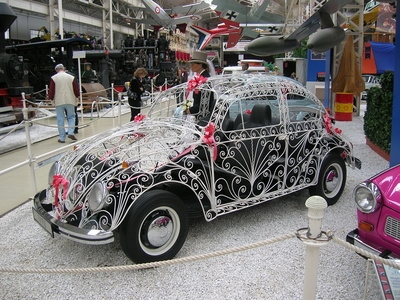
The Volkswagen Beetle, or Type 1, and its Type 2, 3 and 4 contemporaries use air-cooled, four-cylinder boxer engines. Mounted at the rear of the car, this engine was unconventional as small-car competitors used water-cooled engines mounted at the front of the car.
A horizontally opposed engine, or boxer engine, has two banks of cylinders with two, separate, cylinder heads. The cylinders are mounted horizontally rather than vertically in a configuration such that, as each cylinder fires, the crankshaft moves with less opposing force than in a conventional, inline, four-cylinder or V6 engine. The overhead valves open on the inlet and exhaust sides by way of the cam followers, push rods and rocker arms to let in an air-fuel mixture and release exhaust gases.
The VW boxer engine does not have a radiator or a coolant system running under the hood. The vented slats on the engine cover of a Type 1 draw in cool air as it runs over the car. The air is directed toward the cylinders, which have deep fins running down their sides for more surface area. Conventional, water-cooled cylinders do not have these fins, instead relying on a coolant mixture to pass across the cylinders as it circulates throughout the car's cooling system.
In hot weather, an air-cooled engine can have a tough time maintaining proper operating temperature as the air entering the engine compartment is undesirably hot. This is why classic VWs have trouble in hot weather, especially the Type 2 bus with its inherently inferior air intake system.